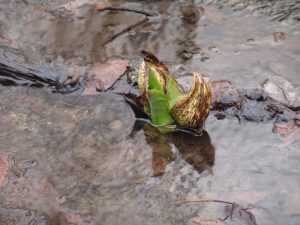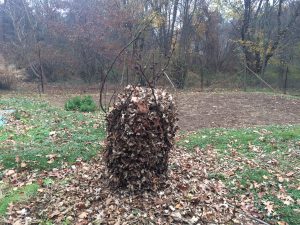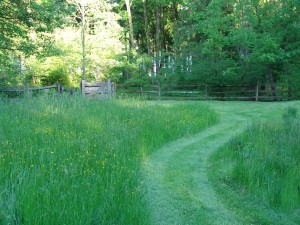We have had some crazy weather this spring. Warm days in January and February caused cherries and some magnolias to bloom extra early and even some trees to leaf out early. Trees that leafed out early in most cases had tender leaves burned back when cold temperatures hit. That should not be a problem for most trees. Unless the tree is already under serious stress, a tree is capable of sending out a new set of leaves. Sycamores often have to leaf out twice around here because they are so susceptible to defoliation due to anthracnose (a fungal disease) in a cool, wet spring.
Our warm winter was followed by a March snow storm with heavy rain-laden snow that wreaked a different type of havoc on trees. Some trees were uprooted and others left leaning. Once a tree has been uprooted it is usually a “goner.” Even leaning trees are hard to save. When ice and snow pull a tree over, the fine roots and root hairs are stripped away. Root hairs and fine roots are in close contact with the soil, so when larger roots pull away from the soil, which is what happens to cause the leaning, the root hairs are left in the soil and are no longer attached to the roots. Roots take up water and nutrient through their root hairs. Plants can regrow root hairs, but if a large part of the root system is damaged, the tree may not be able to take up enough water and nutrients to support the growth of new roots hairs and fine feeder roots, let alone leaf out and grow normally this spring.
If a relatively small tree is leaning slightly, you may be able to use a shovel to right the tree and then stake it temporarily to keep it straight while new roots grow to re-stabilize the tree in the soil. But, a large leaning tree or a tree that has fallen over completely should probably be removed.
The good news is this gives you the chance to plant something new. A great opportunity to find new and interesting plants is the University of Delaware Botanic Gardens plant sale. The sale is held over the weekend of Ag Day every spring. This year that will be Thursday, April 27, 3-6 PM (UDBG members only; to become a member go to http://ag.udel.edu/udbg/friends/udbgfriends.html), Friday, April 28, 3-6 PM and Saturday, April 29, 9:30 AM – 4 PM (Ag Day). This year the sale is celebrating 25 years of bringing interesting and hard to find plants to the gardening community. The plant sale catalog is available online (http://ag.udel.edu/udbg/events/documents/2017UDBG__Spring_PlantSaleCatalog.pdf. If you want to learn about some of the plants at the sale, come to the Spring Plant Sale Preview Lecture on April 5 from 7-9 PM in The Commons in Townsend Hall on UD’s campus. The lecture is $5 for UDBG Friends and $10 for nonmembers. On Wednesday, April 12 from 4:30-6:30 PM, Dr. John Frett will lead a guided walk of the 2017 Plant Sale Highlights. The guided walk is also $5 for UDBG Friends and $10 for nonmembers. Register for either event by emailing botanicgardens@udel.edu or calling 302-831-2531. Proceeds from the sale support internships for students to work in the gardens and learn about public garden management.









